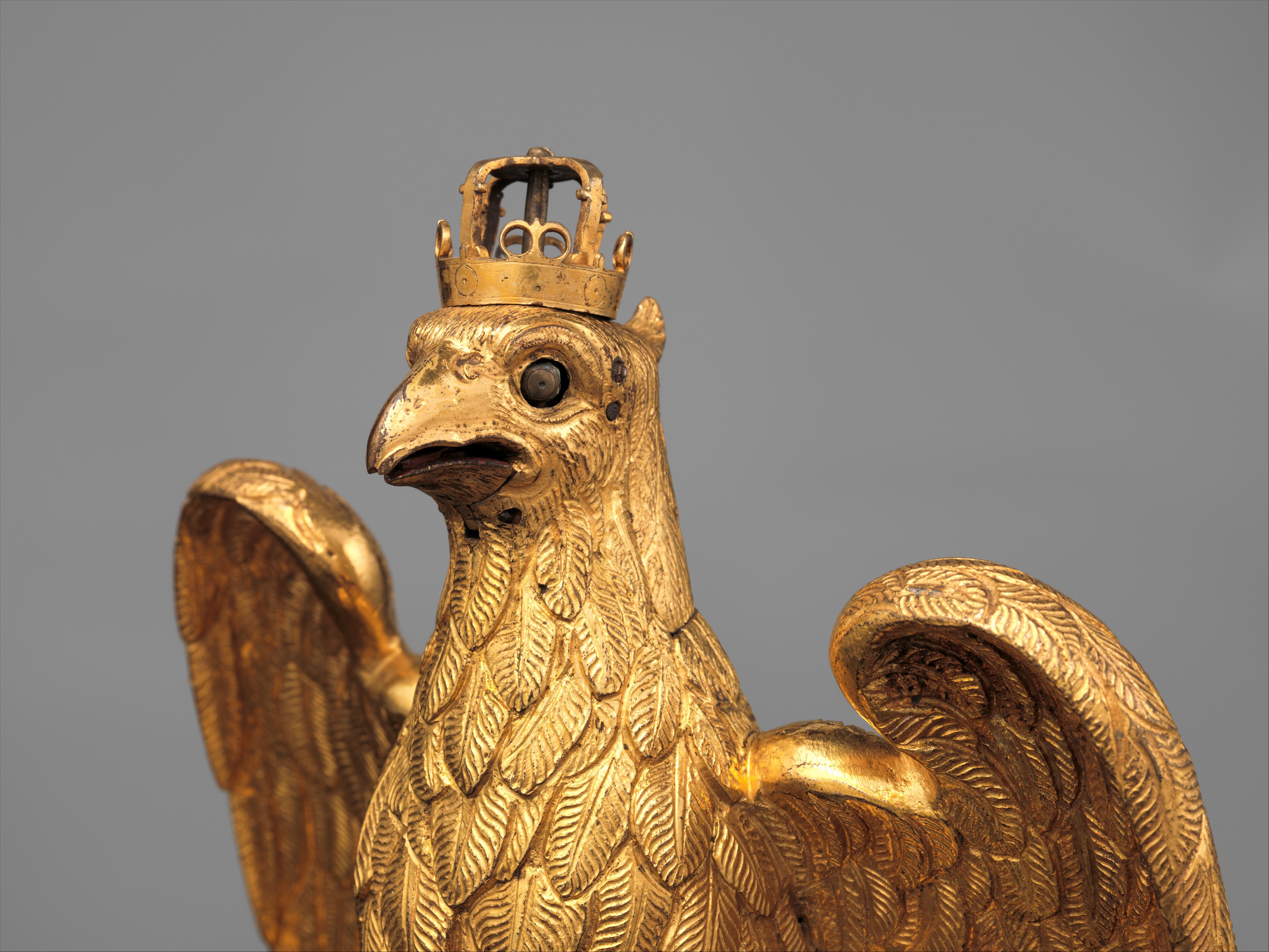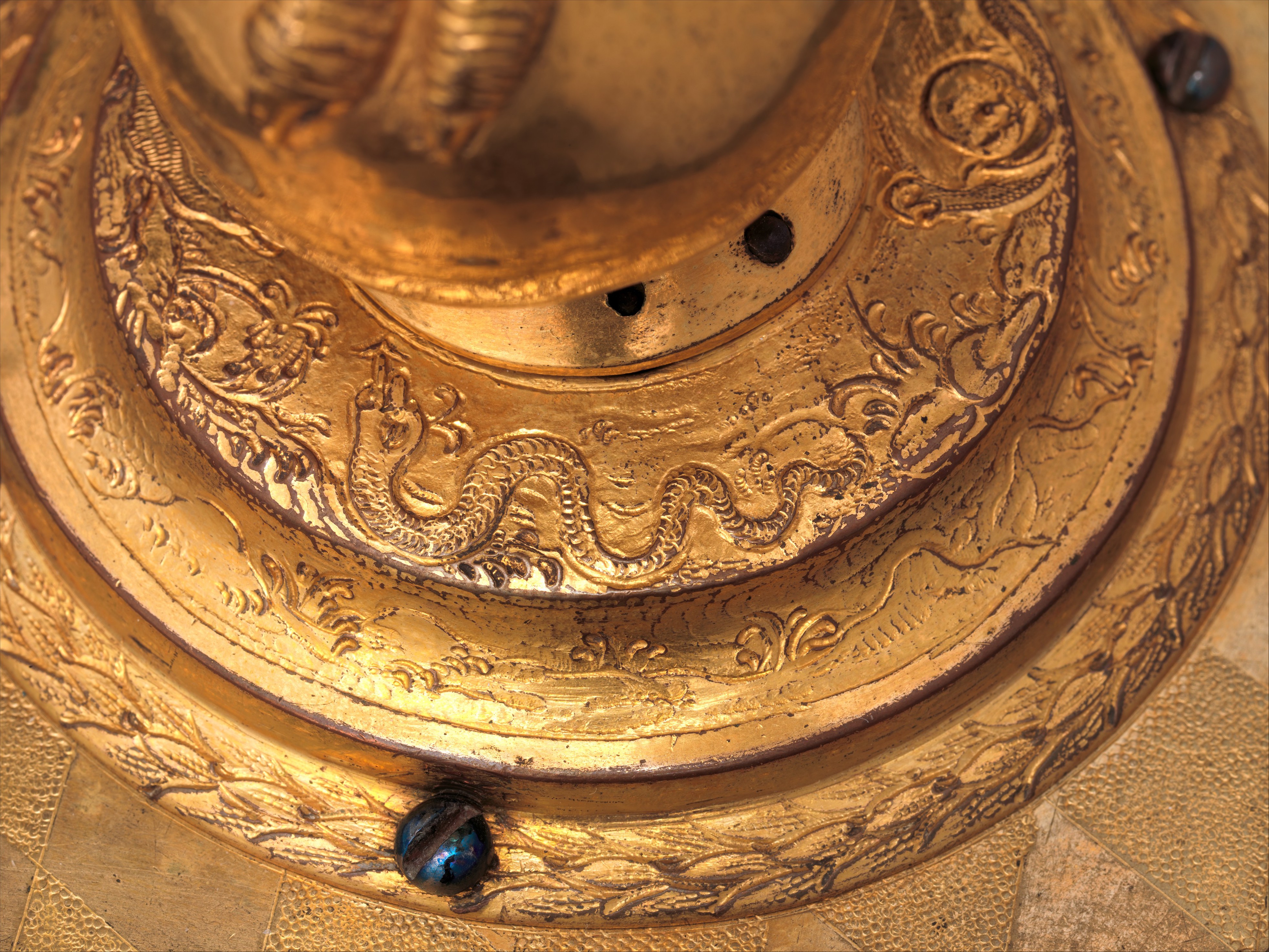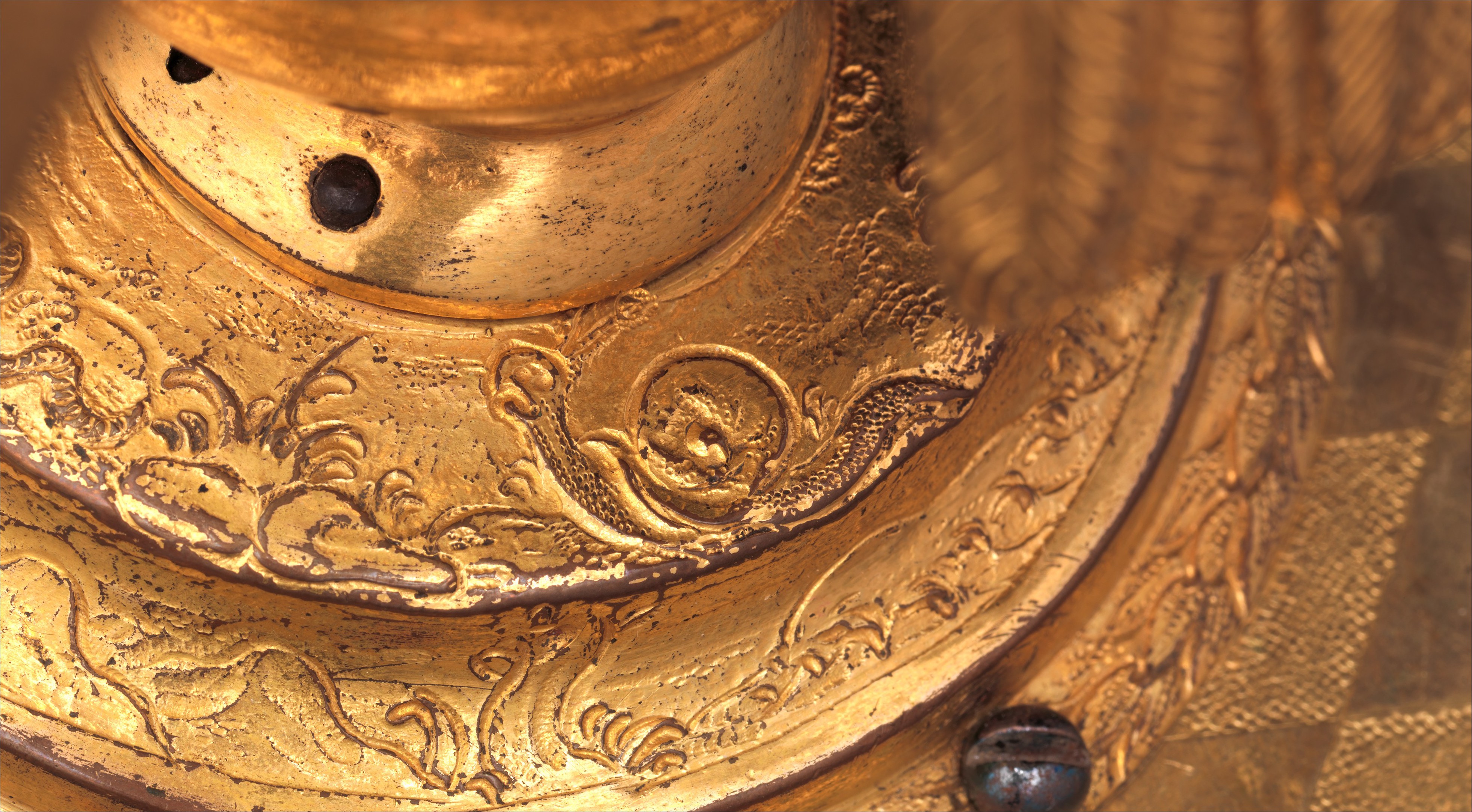Automaton clock in the form of an eagle
Not on view
European clocks were often, and from the outset, associated with the creation of automata—moving, mechanized figures or contrivances. Seventeenth-century Augsburg clockmakers specialized in small domestic examples. Here, when the clock strikes the hour, the scepter moves, and on the quarter hours the eagle opens and shuts its beak and rolls its eyes. The eagle emblem of the Habsburgs had special meaning for inhabitants of Augsburg, a free city with a direct allegiance to the Habsburg Holy Roman emperors.
Due to rights restrictions, this image cannot be enlarged, viewed at full screen, or downloaded.
This artwork is meant to be viewed from right to left. Scroll left to view more.





